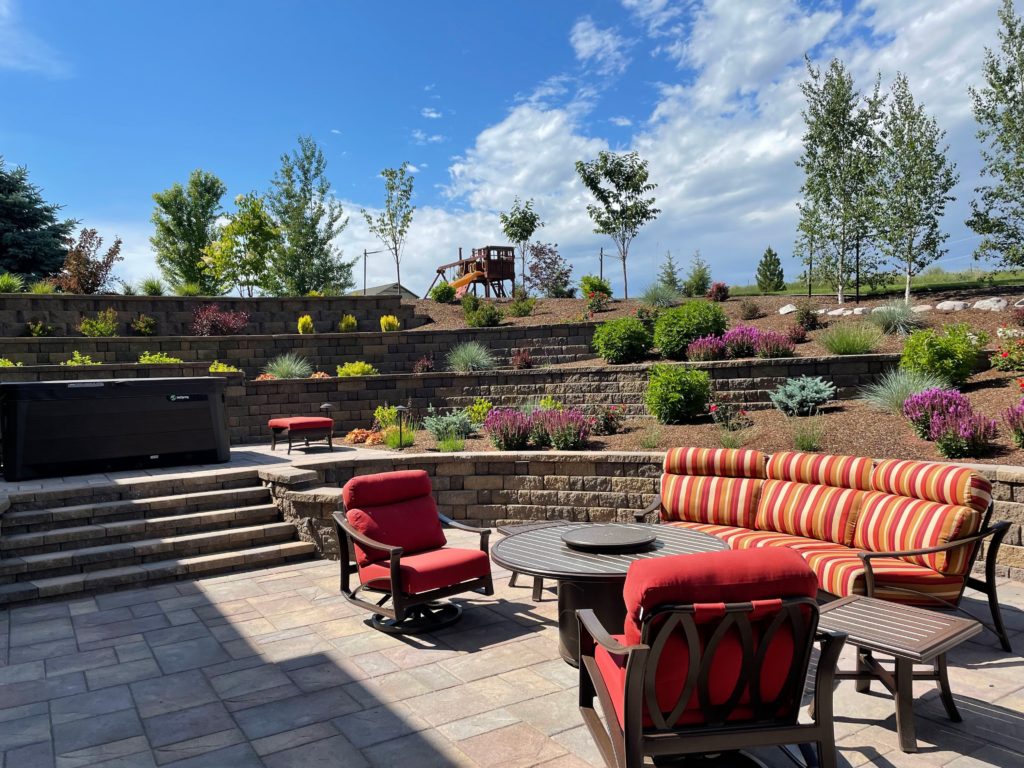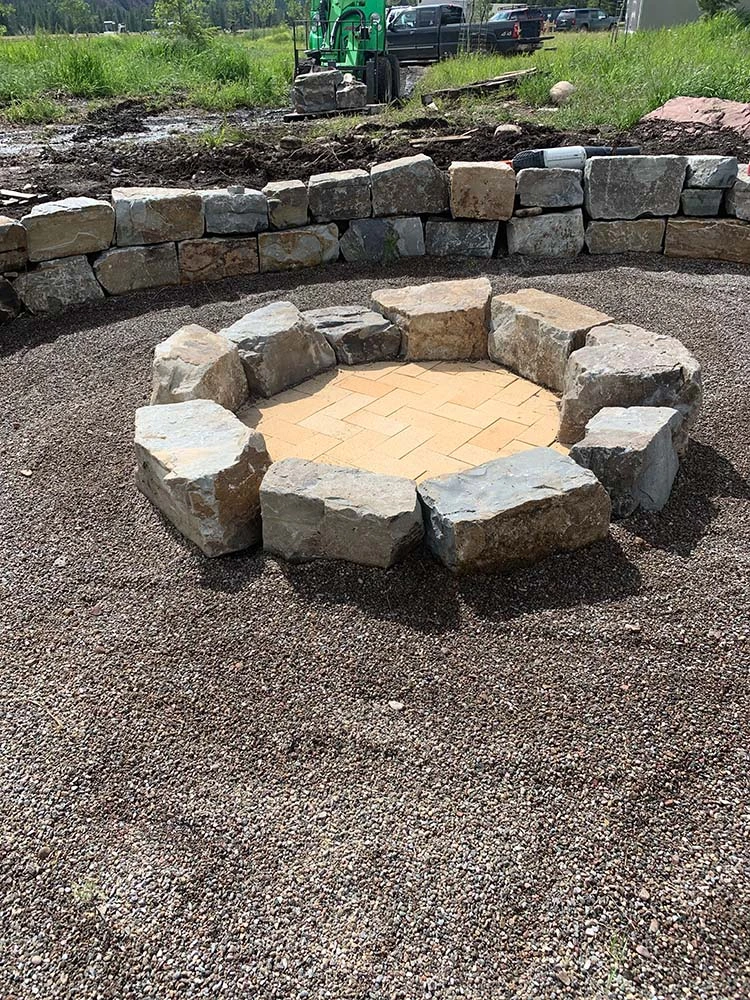Why do we need a good patio?
In Missoula, our summers are short but oh-so-sweet. Warm temperatures, long days, and clear skies all beg us to get outside and soak it up all we can. We have many options for doing this, including the plethora of river and trail options around Missoula. And when you’re done floating the river or cleaning the mud off your mountain bike, many of us reach for a cold beverage and a patio or deck in our back yard, just not quite ready to go inside and plop down in front of the TV. Attitudes like this are what makes Missoula a special place.

What makes a good patio?
To really get the most out of your patio, there are a few things you ought to consider. What size do you need? What shape is best? What’s the best material for it? What’s the best location for it?
When considering patio size, it’s best to consider how you plan to use it most often. Are you an entertainer? Chances are you’ll want to maximize the size of the space, within reason. If you’re not an entertainer, 14-16 feet across (both length and width) usually works well, giving enough space for a table and 4-6 chairs.
How about shape? Patio shape is going to depend on many factors, including size. Also important to consider is the existing landscaping (if any exists), the shape of the house, and the slope of the yard. Patio shape can be functional or artful, or both.
In my mind, the material you choose to build your patio out of is one of the most important considerations. With the climate we have in Missoula (freezing and thawing), there is NO REASON to even consider concrete as a logical patio choice, unless you are very budget constrained or in love with replacing your patio every 3-5 years. Even then, there are better (and cheaper) options for patio surfacing. We remove much more concrete than we install around town, much of it only a few years old and already riddled with cracks and disintegrating from the weather and salt use.

In the examples above, see how the concrete is cracked and settling. It appears that at one point, someone tried to fix it with a crack filler, but that didn’t work. The advantage that paverstones have over concrete are many, including their ability to move, or flex with the freeze and thaw of the ground they are set on. The concrete above was THICK – as thick as 10 inches along the edges when we removed it – yet it still cracked. Another advantage that paverstones give you is a selection of colors. Yes, you can dye concrete, and you can stamp it in an attempt to pretty it up, but by the time you do so, you’ve spent about as much as you would have on paverstones, and you’ll have to seal it every year and eventually replace it. Paverstones will last you many more years. They also have a feeling about them – a feeling of warmth and softness that concrete just can’t duplicate.
Other options for patio surfacing include flagstone, gravel, and decomposed granite. All have their pros and cons, but through experience, I’d suggest using these materials for lower traffic pathways and seating areas. Unless you spend a lot of time cutting and fitting flagstone together (which we have done, and it’s a beautiful result!), flagstone tends to make a poor patio surface for an area that’s used alot. It’s hard to get it truly level, and the feet of tables and chairs can fall into and get stuck between the cracks of the stones. In the example below, much time was spent cutting the stones to fit and a polymeric sand was used to seal the joints and make the surface suitable for seating.
Peagravel and decomposed granite are other great options that won’t break the bank. I don’t recommend them for very high traffic areas, as the aggregate tends to get kicked around a bit, but for firepits, informal pathways, or anywhere else that won’t get used a lot, they are great options.

Another thing to think about, if your space allows for it, is to build the patio with multiple levels. This adds interest to the space, and helps to separate it into “rooms”. The photo above shows multiple levels, materials, and design elements. Pavers were used for the high traffic areas, and by changing the direction of the running bond and the level of the patio, it separates the landing out of the house and the dining area. The pea gravel area was added as a low cost firepit surfacing, and boulders were built into the edge of the patio to create further interest and create seating.
Finally, where is the best location for your new patio? Again, totally dependent on your specific yard, your planned uses, shade, and so forth. The best answer is where you’ll use it the most!
Designing a great patio isn’t always a clear cut as building a frame out your back door and filling it up with concrete, at least not if you plan to actually use the space and enjoy it. Bringing in a professional to assist with the design and construction of it is not a bad idea, but even if you choose to tackle the task yourself, at least you have an idea of what to consider now. Take a look at our Facebook page for more inspiration, and happy building!

